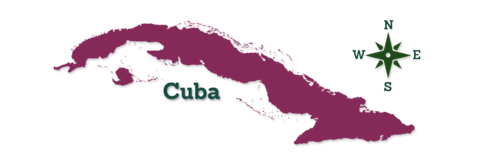ASK A SCIENTIST: Cuba’s Reptiles and Amphibians – What Is the Difference Between a Reptile and an Amphibian?
Title slide: Blue background with a lizard and frog silhouette.
On Screen text: Cindy, Age 9.
KID'S VOICE: What is the difference between a reptile and an amphibian?
Man sitting at a desk, in an office with a globe, stuffed lizards and specimen jars, begins to speak.
CHRIS RAXWORTHY: So, the difference between reptiles and amphibians is reptiles have got scales and dry skin.
Photo of a bright green lizard sitting on a rock.
RAXWORTHY: They lay hard-shelled eggs, but they have a backbone.
Photo of a brown and cream-colored frog sitting on a leaf.
RAXWORTHY: And amphibians have moist, usually smooth skin. There's no scales on them, and they don't have hard-shelled eggs. But they do have, also, a backbone.
Raxworthy speaks in his office.
RAXWORTHY: And both groups have got eyes and a mouth, but some of them look rather strange, like some of the elongated forms, like the caecilians.
Photo of a caecilian, a legless, worm-like amphibian.
RAXWORTHY: They're amphibians, as are burrowing skinks.
Photo of a brown lizard-like amphibian with bright red eyes.
Photo of a dark and light blue snake, crawling in leaves.
RAXWORTHY: And of course, snakes are very elongated without legs. So, some of the species have got legs, and some have actually lost them.
ASK A SCIENTIST: Cuba’s Reptiles and Amphibians – How Many Kinds of Reptiles and Amphibians Live in Cuba?
Title slide: blue background with a lizard and frog silhouette.
On Screen text: Hunter, Age 13.
KID'S VOICE: How many kinds of reptiles and amphibians live in Cuba?
Man sitting at a desk, in an office with a globe, stuffed lizards and specimen jars, begins to speak.
CHRIS RAXWORTHY: There are a big diversity of reptiles and amphibians in Cuba. And with the amphibians, there are currently 67 species, that are described, but we know that there are going to be a lot more frogs still to be discovered in Cuba. All the species in Cuba are frogs, the amphibians. We don't see examples of salamanders or caecilians there.
And with the reptiles, there are currently about 147 species or 149 species of reptiles that have been recorded in Cuba.
Photo of a bright blue and green lizard sitting on a stick.
Photo of a snake with his head peeking up among leaves.
RAXWORTHY: And they include things like lizards and snakes. There is an aquatic turtle there, for example. And they also have marine turtles.
Photo of a sea turtle swimming underwater.
Raxworthy speaks in his museum office.
RAXWORTHY: But, again, just like the amphibians, we expect that number to continue to increase as more research work discovers more new species.






 Biodiversity
Biodiversity
 Brain
Brain
 Genetics
Genetics
 Marine BiOLogy
Marine BiOLogy
 MicrobiOLogy
MicrobiOLogy
 PaleontOLogy
PaleontOLogy
 ZoOLogy
ZoOLogy
 AnthropOLogy
AnthropOLogy
 ArchaeOLogy
ArchaeOLogy
 Astronomy
Astronomy
 Climate Change
Climate Change
 Earth
Earth
 Physics
Physics
 Water
Water
